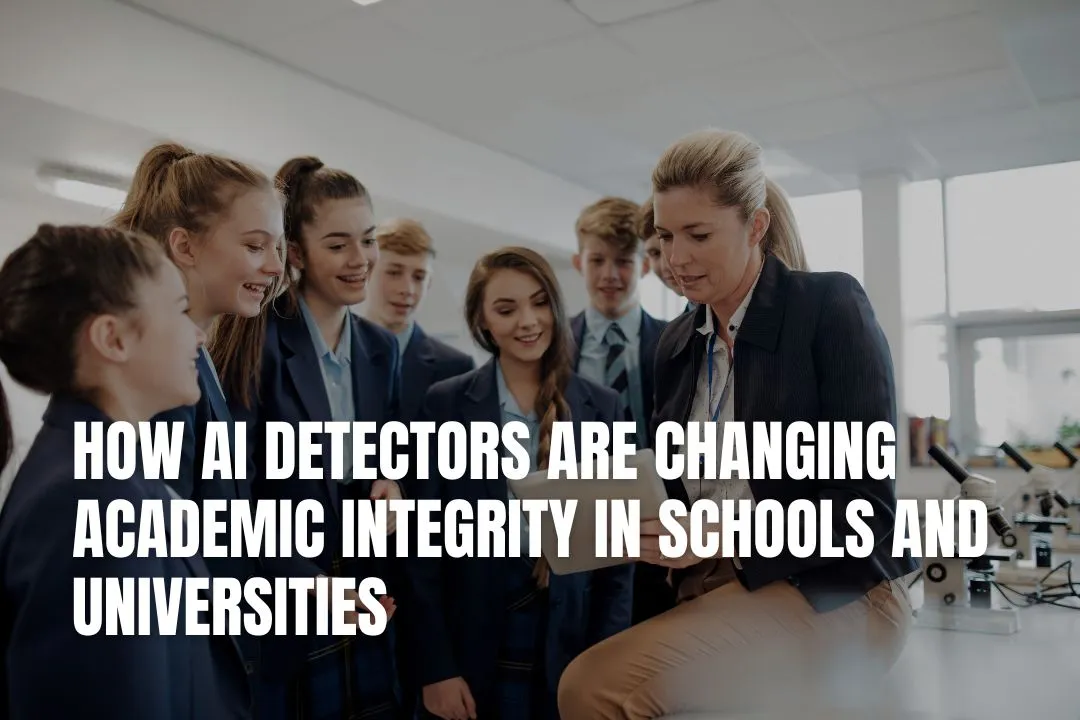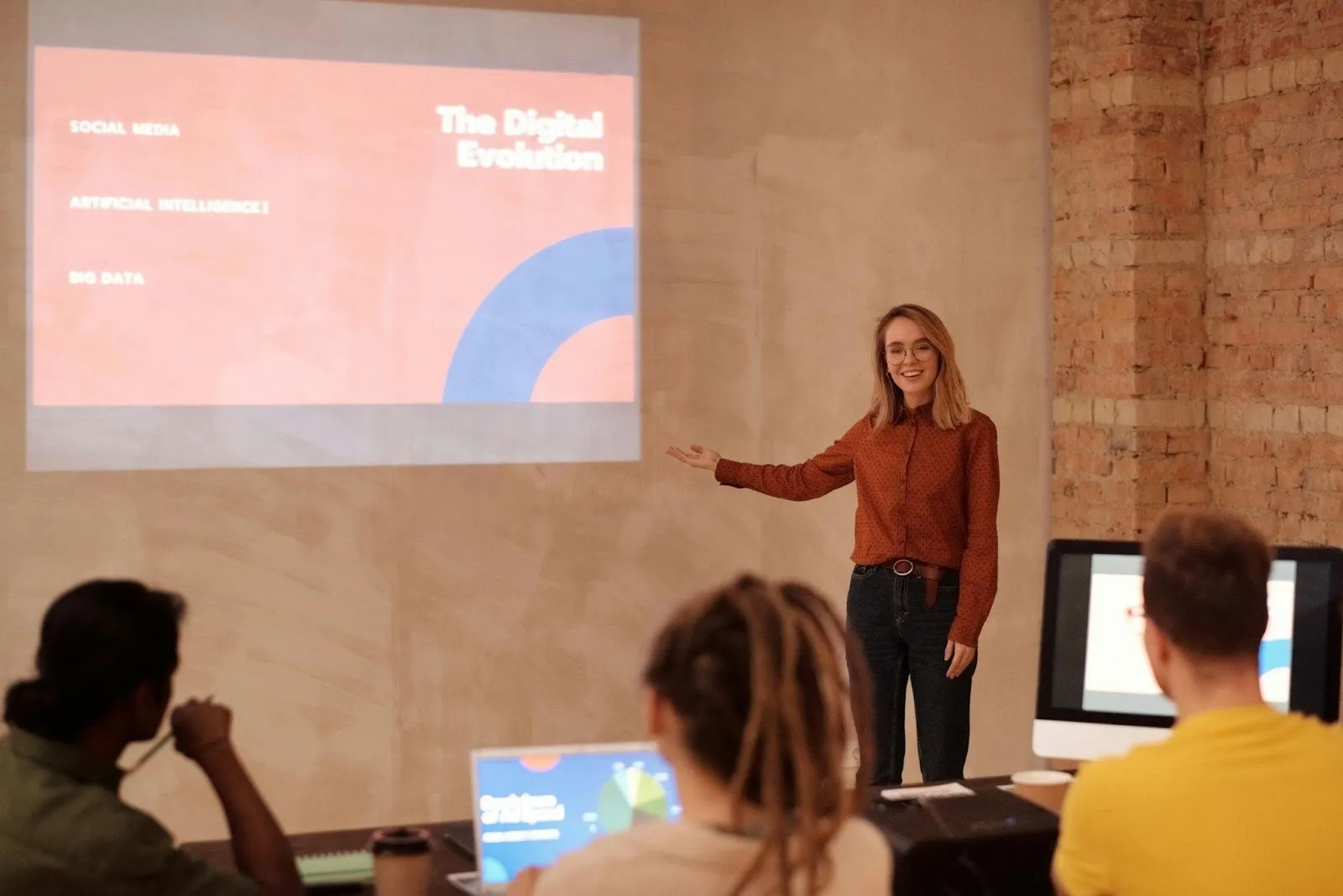
Universities have undergone a radical transformation over the past few years. The advent of generative artificial intelligence technologies, such as large-language‐model services that can compose essays, solve problems, and summarise material, has posed new challenges to academic integrity.
At the same time, institutions are turning to detection tools a.k.a. "AI detectors" or "AI checkers" to assess when student assignments may have been created with the help of AI rather than entirely by the student.
This article looks at how and where these AI detection technologies are affecting academic integrity in schools and universities: what they can do, what they are struggling with, and how institutions are reshaping their policies and practices around them.

"AI detection software" is computer software designed to search submitted work (assignments, essays, reports) and estimate how likely it is that a machine (or heavily edited by one) rather than a human authored (or edited) the text.
They tend to scan for patterns such as sentence construction, word choice, predictability of language, and other statistical features to determine whether text "appears like" human-authored or machine-authored.
There are several reasons why these instruments are being used:
For example, large ed-tech companies now offer an "AI content detection" module in their packages designed to allow teachers to detect likely AI-generated work.
Detection technologies for AI are thus increasingly a subject of conversation in discussions of academic integrity.
These are a few of the effects AI detectors are (or can) have on scholarly integrity practice:
When students know that there are connections that possibly can detect AI-generated work, it may discourage plagiarism using generative tools (or at least result in more careful use). The existence of the tool contributes to a message that original human composition is important and that depending on AI to provide full answers may be risky.
Where conventional detection focused on detecting similar text matches that already exist, AI detection attempts to provide insight into the manner in which the work was composed, whether fully human-authored, machine-authored, or extensively machine-edited.
That gives instructors a fresh way to understand authorship. As one vendor puts it: "Our AI checker provides valuable insights on how much of a student's submission is original, human-written content versus likely AI-written or paraphrased."
With clear policies around AI application in student work, schools can utilise detection tools as part of enforcement and audit processes.
For example, certain schools integrate findings of detection into learning-management systems (LMS) to allow instructors to see "percentage likely AI-generated" and then decide whether more investigation is necessary.
With the danger of students relying solely on AI becoming more and more evident, instructors can redesign exams to emphasise process (drafts, thinking, in-class work) rather than whether or not final essay drafts are flawless.
Detection tools in this sense force instructors to redesign assignments to better accommodate human-writing, human thought, and creativity.
While encouraging, there are serious limitations and perils to deploying AI detectors. These must temper expectations.
Studies indicate that AI detection tools are far from infallible. In one study, when a tool (used generically) was tested on AI-generated text produced by ChatGPT and other systems, accuracy fell sharply when the content had been edited or lightly changed.
In addition, one article warns: "AI detection software is far from fool-proof; it has high error rates and can lead instructors to unfairly accuse students of cheating."
When errors happen, especially false positives (human writing that a system mistakenly identifies as AI) or false negatives (AI writing that a system fails to detect), there are serious fairness concerns.
Several schools have worried that AI detectors will unfairly flag some students, like those from a non-English language background. One university memo states: "AI detector scores should be treated sensitively and with healthy scepticism."
Another issue: The majority of detection tools collect and use student writing for model training or vast-text databases. That is an issue for student consent, data usage, privacy, and institution and vendor rights.
Detection results can easily be misused. For example, a tool may report a "high probability of AI origin," but that's no proof of misbehaviour; it is a marker. Teachers must interpret results, student background, and other conditions in context before writing. A guide states: "The tool provides information, not an indictment."
If institutions consider detection flags to be absolute proof of cheating, the odds of unfair punishments increase.
As AI-generated text becomes more sophisticated (with increasing quality, more natural sentence structure, and creative freedom), detection software will be driven harder. A study argued that current detectors' "already poor accuracy levels (39.5%) show dramatic accuracy drops (17.4%) when faced with tampered content.".
In short: detection is not a one-off, end-of-project fix; it forms part of an evolving environment.
Various schools and universities are implementing policy, practice, and technology changes due to AI detection tools. Some of the key developments follow.
Institutions are actually altering their academic-integrity policies to directly mention AI use. For example, some institutions have wording now that students must disclose whether they used AI writing or editing tools, or that AI-generated content will be dealt with in exactly the same way as plagiarism.
Not necessarily aimed at detection tools, this shift points out the idea that originality is human thought and creation.
A few institutions use AI-detection scores as early-stage "flags" and not as final decision-makers. Workflow may include looking at the detection score, followed by reviewing drafts, interviewing the student, comparing to past work, and reference checking. The detection tool is used as one of multiple inputs.
As detection technologies become more common, instructors are shifting away from "one big take-home essay" style formats to assessment designs that emphasise:
These formats are harder to completely outsource to AI without being caught or human intervention.
Some institutions have cancelled or cut back on the use of detection tools entirely based on issues of reliability, fairness, expense, or ethics. For example, one institution clarified that findings using the detection tool alone were not sufficient for allegations of misconduct.
That is to say: detection tool + policy + human judgment = emerging best practice, not "deploy tool and done."
When educators adopt a specialised "AI checker", they are effectively constructing a new tier in scholarly-integrity infrastructure.
Here's why that matters:
Therefore, the deployment of a tagged "AI checker" changes both the technical and cultural dimensions of academic integrity.
If institutions and schools are introducing AI detection software (or in the process of introducing it), the following are crucial considerations:
Inform students that a detection tool will be available, explain its general purpose, describe what the threshold is, and outline how results will be used.
Clarify to students what is expected/acceptable in using AI tools as an editor, drafter, or assistant.
Revamping the academic-integrity policy to include consideration for the presence of generative AI and proper/improper uses.
Specify what happens when an AI checker detects work, what subsequent actions are taken (draft review, student interview, further evidence).
Faculty would be aware of how the detection tool works, what its limitations are, what a "flag" is, and what it is not. They would, for example, know that a high probability score is not always indicative of misconduct.
Integrate training in scoring interpretation within the framework of assignments and student history.
Consider having fewer task-based assessments that are low-hanging fruit to outsource to AI (e.g., long unmonitored essays) and more multiple small-scale checks, process-based parts, or in-class timed activities.
Encourage reflective writing, process description, steps of thought, not just final output.
Bias check: Does the detector overflag students who are non-native English speakers or who have non-standard writing styles? Some institutions report concern.
Make sure student consent, data use, and privacy concerns are addressed. Tools can save student submissions or writing style profiles for future training.
Don't use detection results for punishment alone. As a stimulus for investigation, not as an automatic sanction.
Regularly monitor the detection tool's performance (false positives/negatives, student feedback, fairness) and whether changes to assessment design are having the intended effect.
Recognise that as generative AI emerges, detection tools will need to be constantly updated, and institutions will need to be flexible.
For university and school students, the growing use of AI detection software means a shift in expectations and habits:
Looking ahead, here are some trends and potential directions:
The increasing application of AI detection technology opens a new front in academic honesty for institutions and schools.
The tools promise much: they introduce deterrence, illuminate machine-vs-human composition, and assist institutions in aligning with the expanding presence of generative AI.
The tools also bring substantial challenges: limitations of accuracy, issues of fairness, changing AI capabilities, and the risk of hyper-reliance.
What that means for institutions is that detection software should not be considered a magic bullet. Instead, they should be incorporated into an overall strategy, clear policy, open student communication, assessment redesign, instructor training, watching for fairness, and ongoing tweaking.
For students, it means a shift in attitude: expectations of originality now come with the added layer of "how did I use AI, if at all?" And how do I capture my process, reflection, and human judgment?
As generative AI becomes more integrated into pedagogical practice, the question shifts from "can we identify AI use?" to "how do we integrate AI in a way that enhances actual learning and maintains trust?"
Technologies for detection are part of the solution, but the larger solution is how institutions, teachers, and students reimagine the learning process to reflect human‐machine collaboration instead of seeing AI as simply a threat.
AI detectors analyse text for specific patterns that are characteristic of machine-generated content. They look at things like sentence consistency, word predictability, and overall linguistic structure. If the text shows too many of these machine-like traits, it gets flagged as likely being AI-generated.
No, they are not. These tools can make mistakes, sometimes flagging human-written text as AI-generated (a 'false positive') or failing to spot text created by AI (a 'false negative'). This is why most institutions recommend using the results as a starting point for investigation, not as absolute proof of misconduct.
This depends entirely on your school's or university's specific academic integrity policy. Some institutions allow the use of AI for editing or brainstorming, provided you disclose it. Others may have stricter rules. Always check your institution's guidelines to be sure.
Institutions are cautious due to concerns about accuracy, fairness, and student privacy. There is a risk that these tools could unfairly flag students from non-English speaking backgrounds. Additionally, questions about how student data is collected and used by these third-party tools raise significant ethical issues.
The safest approach is to use AI as a supportive tool, not a replacement for your own work. Use it for generating ideas or checking grammar, but ensure the core arguments, structure, and writing are yours. Keep drafts and notes to demonstrate your thought process, and always be transparent about your methods according to your institution's policy.